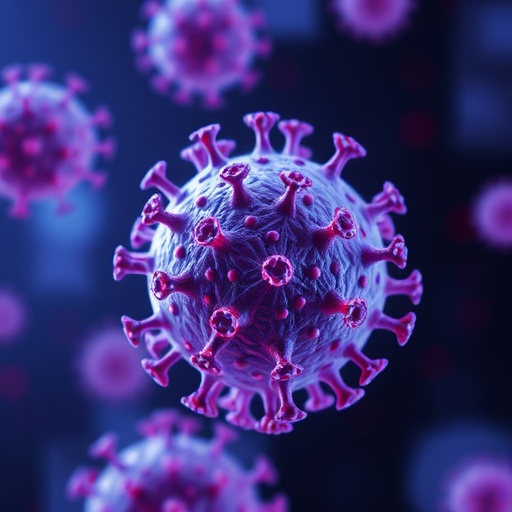
In the relentless battle against cancer, scientific research continuously uncovers novel molecular mechanisms that cancer cells exploit to survive hostile environments and evade therapeutic interventions. One of the most recent revelations in this vast biochemical landscape is the identification of histone lactylation, a post-translational modification that is now being recognized as a pivotal player in tumor biology, immune evasion, and treatment resistance. This groundbreaking discovery opens an exciting new avenue for therapeutic strategies aimed at overcoming the formidable challenges posed by malignant tumors.
Histone modifications have long captivated cancer researchers due to their profound influence on gene expression and cellular identity. Among these, acetylation and methylation have been extensively studied, laying the foundation for epigenetic therapies. However, histone lactylation, a relatively novel type of modification first described just a few years ago, introduces a metabolic dimension to epigenetic regulation by linking cellular metabolic states directly to gene expression outcomes. This revolutionary idea merges metabolic pathways with chromatin biology, offering fresh perspectives on how cancer cells adapt and thrive.
At its core, histone lactylation involves the addition of lactyl groups derived from lactate onto specific lysine residues of histone proteins. Lactate, a metabolic byproduct traditionally viewed as a waste molecule from anaerobic glycolysis, has gained recognition as an important signaling metabolite. In cancer cells, which frequently exhibit the Warburg effect—a preference for glycolysis even under oxygen-rich conditions—high levels of lactate accumulate within the tumor microenvironment. This surplus of lactate now emerges not just as a metabolic quirk but as a direct epigenetic modulator influencing gene expression via histone lactylation.
.adsslot_QMgwBAKu5H{width:728px !important;height:90px !important;}
@media(max-width:1199px){ .adsslot_QMgwBAKu5H{width:468px !important;height:60px !important;}
}
@media(max-width:767px){ .adsslot_QMgwBAKu5H{width:320px !important;height:50px !important;}
}
ADVERTISEMENT
The implications of histone lactylation in immune evasion are particularly compelling. Tumor cells often create an immunosuppressive milieu that inhibits the activity of cytotoxic immune cells such as T lymphocytes and natural killer cells. Emerging evidence suggests that histone lactylation may facilitate this immune escape by modulating the transcription of key genes involved in immune checkpoints and cytokine production. This adaptive epigenetic mechanism thereby equips cancer cells with an enhanced ability to ‘hide’ from immune surveillance, posing a significant barrier to immune-based therapies.
Moreover, the role of histone lactylation in promoting therapy resistance is drawing intense attention. Resistance to chemotherapy and targeted therapies remains a leading cause of cancer treatment failure. Studies indicate that cancer cells with elevated histone lactylation levels exhibit a transcriptional profile skewed towards survival pathways and DNA repair mechanisms, making them resilient to traditional cytotoxic agents. This modification appears to act as a metabolic sensor that shifts gene expression to favor resistance phenotypes, underscoring the connection between metabolism, epigenetics, and therapeutic outcomes.
One particularly intriguing dimension of histone lactylation is its reversibility and dynamic regulation. Unlike irreversible genetic mutations, histone modifications are inherently plastic, enabling rapid adaptation of cancer cells to fluctuating environmental stresses. Understanding the enzymatic machinery responsible for writing, reading, and erasing the lactylation mark is an area of active research. Identifying specific lactyltransferases and delactylases could provide molecular targets for next-generation inhibitors designed to disrupt these adaptive epigenetic circuits.
The therapeutic potential of targeting histone lactylation extends beyond direct modulation of tumor cells. Since this modification regulates the expression of genes involved in immune evasion, it offers a promising strategy to enhance the efficacy of immunotherapies. Combining histone lactylation inhibitors with immune checkpoint blockade or adoptive cell therapies could synergistically restore immune competence against resistant tumors, raising hopes for more durable clinical responses.
Importantly, recent preclinical studies have begun to map the landscape of histone lactylation across different cancer types, revealing variable patterns that correlate with metabolic phenotypes and treatment responses. Tumors exhibiting high glycolytic flux and elevated lactate production tend to show robust lactylation signatures, highlighting histone lactylation as a metabolic-epigenetic biomarker. Such insights pave the way for personalized medicine approaches where patients’ tumors are profiled for lactylation status to tailor optimal therapeutic regimens.
Beyond oncology, histone lactylation is gaining recognition in various physiological and pathological contexts including inflammation, infection, and fibrosis. This modification’s involvement in immune cell differentiation and function points to a broader biological relevance. Thus, investigating the crosstalk between histone lactylation and other epigenetic marks continues to unravel complex regulatory networks that govern cell fate decisions in health and disease.
Technological advances such as high-resolution mass spectrometry, chromatin immunoprecipitation sequencing (ChIP-seq), and single-cell epigenomics have been instrumental in characterizing histone lactylation landscapes. These tools enable detailed mapping of lactylation sites and identification of gene targets affected by this modification, providing an essential framework for deciphering its functional consequences. Integration of metabolomics with epigenetic data further enriches understanding of how cellular metabolism and chromatin state co-evolve in cancer progression.
The intricate interplay between metabolism and epigenetics exemplified by histone lactylation underscores the need for interdisciplinary research bridging biochemistry, immunology, and clinical oncology. It challenges the traditional compartmentalization of scientific disciplines and calls for comprehensive approaches to tackle cancer’s adaptability. Future clinical trials evaluating agents that modulate histone lactylation pathways will be critical in translating this fundamental knowledge into tangible therapeutic benefits.
Despite the excitement, several critical questions remain unanswered. The full spectrum of enzymes regulating histone lactylation, the specificity of lactylation at different histone sites, and the downstream transcriptional networks modulated by these marks are subjects of ongoing investigation. Additionally, the potential off-target effects and safety profiles of lactylation-targeting drugs must be thoroughly evaluated before clinical application.
In conclusion, the discovery of histone lactylation as a nexus between cancer metabolism, epigenetic regulation, and immune evasion represents a paradigm shift in understanding tumor biology. By illuminating novel mechanisms driving therapy resistance, it heralds the emergence of innovative therapeutic strategies aiming to disrupt these adaptive processes. As research accelerates, targeting histone lactylation might soon become an integral component of precision oncology, offering renewed hope to patients facing refractory cancers.
Subject of Research: Histone lactylation as a novel epigenetic modification influencing cancer immune evasion and therapy resistance.
Article Title: Histone lactylation: a new target for overcoming immune evasion and therapy resistance.
Article References:
Ghadyani, F., Zandi, P. & Ghafouri-Fard, S. Histone lactylation: a new target for overcoming immune evasion and therapy resistance. Med Oncol 42, 399 (2025). https://doi.org/10.1007/s12032-025-02940-w
Image Credits: AI Generated
Tags: biochemical mechanisms of immune evasionchromatin biology and cancer cellsepigenetic therapies for cancerhistone lactylation in cancerimmune evasion mechanisms in tumorslactate’s role in tumor biologymetabolic pathways in cancer adaptationmetabolic regulation of gene expressionnovel cancer treatment strategiespost-translational modifications in oncologytreatment resistance in cancer therapytumor microenvironment and lactylation





